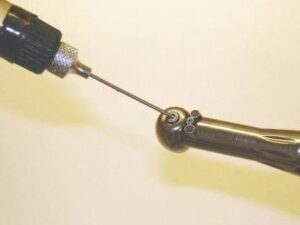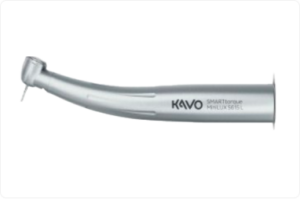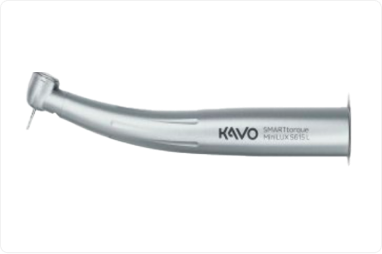When it comes to providing top-notch dental care, having reliable equipment is essential. One of the most important tools in any dental practice is the handpiece. Whether you’re using it for a routine cleaning or a more complex procedure, your handpiece needs to be in tip-top shape to ensure the best possible outcomes for your patients. Unfortunately, even the most well-maintained handpieces can break down over time, leaving you with a frustrating and potentially costly problem. That’s where professional KAVO handpiece repair comes in. In this blog post, we’ll explore why repairing your handpieces is so essential. So whether you’re dealing with a broken handpiece right now or simply want to be prepared for any future issues, read on to learn more about why professional repair is a must for any dental practice.
Understanding KAVO Handpieces

KAVO handpieces are a vital tool for any dental practice, allowing for efficient and precise dental procedures. These handpieces are designed to offer superior performance, reliability, and durability while minimizing vibrations and noise. Understanding KAVO handpieces entails comprehending the unique features and benefits they offer, including their ergonomic design, advanced technology, and superior performance.
The ergonomic design of KAVO handpieces ensures a comfortable and secure grip, reducing hand fatigue and allowing for a more precise and effortless operation. Their advanced technology includes features such as low vibration and noise levels, making procedures more comfortable for both patients and dentists. Additionally, their superior performance allows for fast and efficient procedures, which is crucial in any dental practice.
It’s worth noting that KAVO handpieces are known for their durability, ensuring they last for years without requiring extensive maintenance or replacement. Their high-quality construction and rigorous testing process guarantee that they meet the highest standards of quality and reliability, ensuring that they will be a valuable asset to your practice for years to come. Understanding Kavo handpieces allows you to choose a tool that effectively supports your practice’s goals, increases efficiency, and provides patients with the best possible care.
The Anatomy of KAVO Handpieces
Understanding what makes KAVO handpieces unique requires a closer look at their design and functionality.
Key Components
- Head: The head of the handpiece houses the motor and bearings, which are responsible for driving the bur to rotate at high speeds. It also contains a water spray system that keeps the bur cool during use.
- Bur Chuck: This component holds the bur securely in place and allows for easy changing of burs.
- O-Rings: O-rings provide a seal between the various components of the handpiece to prevent water and debris from entering.
- Air Line/Hose: The air line delivers compressed air from the dental unit to power the handpiece.
Types of KAVO Handpieces
- High-Speed Handpieces: High-speed handpieces operate at speeds of around 400,000 to 500,000 RPM (rotations per minute) and are used for cutting through enamel and dentin.
- Low-Speed Handpieces: Low-speed handpieces operate at speeds ranging from 5,000 to 20,000 RPM and are typically used for polishing and finishing procedures.
Common Issues with KAVO Handpieces
As with any piece of equipment, KAVO handpieces can experience issues over time. Some common problems that may arise include:
- Lack of power or torque: This could be due to a worn-out or damaged motor, bearings, or air turbine.
- Strange noises or vibrations: These may indicate problems with the bearings or other components.
- Water leakage: This can occur if there is damage to the o-rings, leading to a decrease in water pressure and cooling of the bur.
- Difficulty changing burs: If the bur chuck is not functioning properly, it can make it challenging to change burs quickly and efficiently.
Why KAVO Handpiece Repair is Essential
Even the most durable tools require maintenance. Timely repair and maintenance of KAVO handpieces are crucial for ensuring their optimal performance.
Signs Your KAVO Handpiece Needs Repair
Recognizing when your handpiece needs repair can save you from costly replacements. Common signs include unusual noises, decreased performance, and visible damage.
The Risks of DIY Repairs
While it may be tempting to try and fix your handpiece yourself, there are significant risks involved. KAVO handpieces require specialized tools and knowledge for proper repair, which most dentists do not have. Attempting a DIY repair can lead to further damage and even render the handpiece irreparable.
The Benefits of Professional KAVO Handpiece Repair
Professional KAVO handpiece repair offers many benefits, including:
- Expertise: Trained technicians have the knowledge, experience, and specialized tools necessary to properly diagnose and repair any issues with your handpieces.
- Cost-effectiveness: Timely repairs can extend the lifespan of your handpieces, saving you from costly replacements.
- Convenience: Professional repair services often offer quick turnaround times, minimizing downtime for your practice.
- Quality assurance: Reputable repair services provide warranties on their work, ensuring that your handpieces are functioning correctly before being returned to you.
The Process of KaVo Handpiece Repair
Understanding the repair process can help you appreciate the importance of professional services.
- Initial Assessment: The first step in the repair process is a thorough assessment. Technicians will examine your handpiece to identify any issues and determine the best course of action.
- Disassembly and Cleaning: Next, the handpiece is disassembled and cleaned. This step is crucial for removing any debris that might be affecting the performance of the tool.
- Repair and Reassembly: Once the handpiece is clean, technicians will replace any damaged components and reassemble the tool. This process ensures that your handpiece is restored to its original condition.

Preventive Maintenance for KaVo Handpieces
Preventive maintenance can significantly reduce the need for repairs and extend the life of your handpieces.
- Routine Cleaning: Regular cleaning is essential for maintaining the performance of your KAVO handpieces. This includes both internal and external cleaning to remove any debris. Ensure that you follow the manufacturer’s instructions for cleaning and lubrication.
- Proper Sterilization: Proper sterilization is crucial for preventing cross-contamination and ensuring patient safety. Make sure to use an autoclave or other approved:
- Lubrication: Proper lubrication is crucial for reducing friction and wear on the moving parts of your handpiece. Always use the lubricant recommended by KAVO.
- Regular Inspections: Regular inspections can help identify potential issues before they become major problems. Schedule routine check-ups with professional repair services to keep your handpieces in top shape.
The Cost of Neglecting KAVO Handpiece Repairs
Neglecting repairs can lead to several issues that can affect your practice.
- Increased Downtime: A malfunctioning handpiece can disrupt your schedule, leading to increased downtime and lost revenue. This can be avoided by promptly addressing any issues with professional repair services.
- Higher Replacement Costs: Ignoring minor issues can lead to major damage, requiring costly replacements instead of simple repairs. This can significantly impact your budget in the long run.
- Decreased Patient Satisfaction: Handpieces play a crucial role in delivering quality care to patients. Neglecting repairs can result in decreased performance and potentially compromise patient satisfaction.
- Compromised Patient Care: A faulty handpiece can compromise the quality of care you provide, affecting your reputation and patient satisfaction. Regular repairs and maintenance can help prevent this from happening.
Choosing the Right KAVO Handpiece Professional Repair Service
Selecting a reliable repair service is crucial for maintaining the performance of your handpieces.
Factors to Consider
When choosing a repair service, consider the following factors:
- Experience: Look for experienced technicians who specialize in KAVO handpieces.
- Quality of Service: Read reviews and ask for recommendations to ensure quality repairs.
- Warranty: Choose a repair service that offers warranties on their work to provide peace of mind.
- Convenience: Consider the location and turnaround time of the repair service for convenience.
Questions to Ask
Before entrusting your handpieces to a repair service, be sure to ask the following questions:
- What is your experience with KAVO handpieces?
- Do you offer warranties on your work? If so, what do they cover?
- How long will it take to repair my handpiece?
- Do you have any references or reviews from previous clients?
Recommended Repair Timeframes
The recommended repair timeframes for KAVO handpieces are as follows:
- High-speed handpieces: Every 6 to 12 months, depending on usage.
- Low-speed handpieces: Every 12 to 18 months, depending on usage.
- Electric handpieces: Every 2 years or as needed, depending on usage and manufacturer recommendations.
KAVO handpieces are essential tools in any dental practice. Understanding their components, common issues, and the importance of timely repairs can help you ensure their optimal performance and extend their lifespan. By following preventive maintenance practices and choosing a reliable repair service, you can continue to provide quality care to your patients while avoiding costly replacements. So, it is crucial to prioritize regular maintenance and prompt repairs for your KAVO handpieces to ensure they continue to serve you well for years to come. Keep your handpieces clean, well-maintained, and promptly addressed any issues with the help of professional repair services to keep your practice running smoothly. Remember, a well-maintained handpiece is a vital investment in the success and satisfaction of your dental practice. So, don’t neglect it!
https://www.google.com/maps?cid=5687140069355702096



